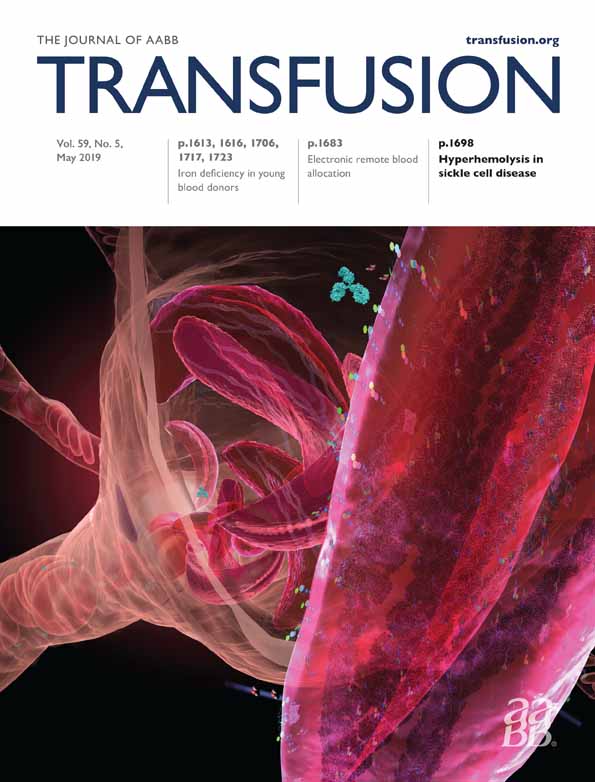A large deletion spanning XG and GYG2 constitutes a genetic basis of the Xgnull phenotype, underlying anti-Xga production
Abstract
BACKGROUND
The PBDX/XG gene encoding the Xga blood group antigen was described in 1994, but the genetic determinant of XG expression on RBCs was reported only in 2018. However, the frequencies of Xg(a−) individuals could not explain the rarity of anti-Xga makers. We therefore sought to elucidate the molecular basis of the Xg(a−) phenotype in people producing anti-Xga.
STUDY DESIGN AND METHODS
Two genomic DNA (gDNA) and 13 plasma-derived cell-free DNA (cfDNA) samples from anti-Xga makers were investigated (14 males and one female). PBDX/XG exon sequencing was attempted on one gDNA sample. Polymerase chain reaction assays were developed and bioinformatics used to define a suspected deletion in all samples.
RESULTS
Investigation of one gDNA sample revealed a 114-kb deletion (esv2662319) on the X chromosome that spans XG exons 4 through 10 and the downstream GYG2 gene. A 3555-bp fragment bridging this deletion was amplified to confirm its presence. Another deletion-specific polymerase chain reaction of 714 bp enabled identification of esv2662319 in both gDNA samples and eight cfDNA samples while ruling it out in one cfDNA. Males were hemizygous for esv2662319 and the female likely homozygous. Four cfDNA sample results were inconclusive, probably due to poor sample quality. Sanger sequencing recognized the recombination junctions as a heterogeneous LTR6B sequence.
CONCLUSION
We identified a large deletion on the X chromosome, resulting in a true, tissue-wide Xgnull phenotype. This deletion was found in 10 of 11 anti-Xga makers from which DNA could be amplified. One sample remained unexplained, indicating further heterogeneity to be explored.
CONFLICTS OF INTEREST
The authors have disclosed no conflicts of interest.




